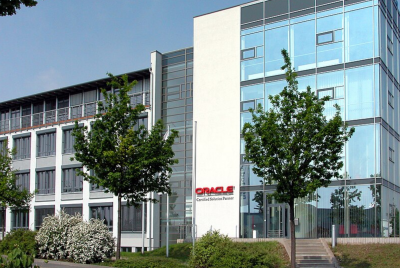Harnessing the AI Revolution: A Guide for Small Business Owners

In an era where technological advancements are reshaping industries and labor markets, artificial intelligence has dominated the headlines and emerged as a transformative force, offering unprecedented opportunities for businesses, including small enterprises. A recent in-depth study in the Journal of Economics & Management Strategy sheds light on the early adoption of AI across the US economy, revealing insights that are particularly relevant for small business owners navigating the complexities of integrating AI into their operations.
The State of AI in America
The study, led up by Kristina McElheran at University of Toronto in partnership with the Census Bureau, utilized the 2018 Annual Business Survey (ABS), producing a comprehensive dataset of 573,000 firms when linked with the Longitudinal Business Database (LBD). With an average firm size of 21 employees and an average age of 16 years, the data is relevant for organizations of all sizes, especially small and medium size enterprises.
The initial uptake of AI across U.S. firms reveals a nuanced landscape: while only about 6% of all firms reported AI use in 2017, this figure leaps to 18% when focusing on larger companies, highlighting the importance of firm size in technological adoption. Despite the buzz around AI, its practical application remains limited, a reminder that integrating such innovations into daily operations presents challenges. However, this trend is not uniform: AI adoption shines within certain sectors, notably among very large enterprises and startups poised for high growth, suggesting a pivotal role for AI in sectors driven by innovation and scalability.
This disparity in AI adoption underscores potential future divides, where large firms benefit disproportionately from AI, possibly exacerbating existing market inequalities. Yet, the landscape among startups is particularly telling; AI use is significantly linked to recent process innovations, indicating that newer, growth-oriented firms are at the forefront of overcoming the practical hurdles associated with AI implementation. This early adoption by startups, often the engines of economic dynamism, hints at a broader, future diffusion of AI across the economic spectrum, consistent with my research in the Journal of Services Research.
"AI has reached an inflection point. Its rapid adoption at the consumer and enterprise levels have influenced congressional leaders to design new rules and regulations around how the technology is used," said Ryan Steelberg, President and CEO of Veritone. "Without a playbook on how to adapt our technical skills to interact with AI technology, which is open source and can be accessed by anyone, the AI industry is relying on clear guidelines from corporate leaders and government officials as the first step toward helping protect consumers and supporting AI technology as it continues to grow," he continued.
Moreover, the interplay between AI and other emerging technologies like cloud computing and robotics suggests a complex ecosystem of digital innovation, where success often hinges on navigating and leveraging multiple technological advancements simultaneously. The clustering of these technologies within firms underscores the potential for significant, albeit uneven, economic impacts, shaped by the complementary nature of these digital tools.
Understanding AI Adoption and Its Implications
The adoption of technology for an organization is a complicated decision because it extends beyond a mere purchase and depends critically on the internal capabilities, including human capital. My research with Giovanni Gallipoli, for example, shows that the expansion of the digital workforce is critical for understanding the growth in the U.S. economy between 1990 and 2010 and just focusing on capital expenditures tells a completely different story.
The rapid speed of adoption can lead to risks, but there are ways to design AI to enhance human outputs, not replace humans. "The unique opportunity that AI offers humanity is to turn back this tide — to extend the relevance, reach and value of human expertise for a larger set of workers... Recognizing this potential, we should ask not what AI will do to us, but what we want it to do for us," said David Autor in a recent article.
Radiology is one of the most commonly cited examples of AI in practice, but it has even reached the sports industry, for instance, generating player analytics, recreating iconic sports moments, and increasing fan engagement through AI-generated voices. However, the most valuable revenue-driving asset a sports organization has, outside of the live experience, is its captured content. Using AI, sports organizations can efficiently and effectively catalog assets to create an accessible and intelligent media library allowing content owners to search content quickly, create new content and even monetize their content through licensing opportunities.
"The talent acquisition industry has to evolve and adapt to changing hiring objectives and constant fluctuations in economic conditions," said Steelberg. "AI can help recruiters balance external pressures against the primary mission of finding the best people for the job. AI allows recruiters to simultaneously post job ads to job boards, search engines and social media channels, saving them time and money and increasing opportunities to source diverse talent. Programmatic job advertising can boost those job ads to be distributed and optimized in real-time further automating the hiring process and giving them back more time to focus on other tasks," he added. While there are many important guardrails and principles for trustworthy AI systems to follow, as I have written about with Mike Teodorescu in the Brookings Institution, research has found large benefits of AI in recruitment systems.
Practical Steps for Small Business Owners
Evaluate and Strategize: Begin with a thorough assessment of your business operations to identify areas where AI can bring value. Whether it's improving customer service through chatbots, optimizing supply chain management, or enhancing product recommendations, understanding your specific needs is the first step toward effective AI integration.
Educate and Equip: The complexity of AI necessitates a knowledgeable approach. Invest in training for yourself and your team to understand AI's capabilities and limitations. Equally important is ensuring the right technological infrastructure is in place, from cloud computing services to data analytics tools, to support AI deployment.
Collaborate and Innovate: Small businesses should not shy away from partnerships. Collaborate with tech providers, join industry consortia, or engage in open-source AI projects. Such collaborations can offer access to resources, knowledge, and technologies that might otherwise be out of reach.
Focus on Ethics and Responsibility: As AI becomes an integral part of your business, adopting ethical practices in its deployment is crucial. This includes ensuring data privacy, avoiding biased algorithms, and being transparent with customers about AI's role in your services.
Monitor and Adapt: AI adoption is not a one-time effort but a continuous process of learning and adaptation. Stay informed about the latest AI trends and innovations and be prepared to iterate on your AI strategies as new opportunities and challenges arise.
The Path Forward
The early patterns of AI adoption across the US economy signal a significant shift in how businesses operate and compete. For small business owners, the journey towards AI integration offers a unique opportunity to reimagine their operations, products, and services. By understanding the landscape, leveraging their nimbleness, and focusing on strategic implementation, small businesses can not only navigate the AI revolution but thrive within it.
The AI wave is not just for the tech giants but is accessible and beneficial for small businesses ready to embrace change. With the right approach, small businesses can harness AI's power to innovate, enhance efficiency, and offer unparalleled customer experiences, securing their place in the future of the digital economy.

About Author: Christos A. Makridis
Christos serves as an Associate Research Professor at the W. P. Carey School of Business and Research Affiliate at the Global Security Initiative (both in Arizona State University), a Professor at the Vienna University of Economics and Business, a Digital Fellow at the Digital Economy Lab in Stanford University, a Non-resident Fellow at the Institute for Religious Studies at Baylor University, an Adjunct Scholar at the Manhattan Institute, a Senior Adviser at Gallup, a policy adviser, and an entrepreneur. He is the CEO/founder of Dainamic, a technology startup working to democratize the use and application of data science and AI techniques for small and mid-sized organizations, and COO/co-founder of Living Opera, a classical music multimedia startup.
Christos previously served on the White House Council of Economic Advisers managing the cybersecurity, technology, and space activities, as a Non-resident Fellow at the Cyber Security Project in the Harvard Kennedy School of Government, as a Digital Fellow at the Initiative at the Digital Economy in the MIT Sloan School of Management, a Non-resident Research Scientist at Datacamp, as a Visiting Fellow at the Foundation for Defense of Democracies, and as an Adjunct Associate Research Scholar at the Chazen Institute in Columbia Business School.
Christos' primary academic research focuses on labor economics, the digital economy, and personal finance and well-being. He also writes frequently for syndicated outlets in the press and serves on the Council of Advisers for the National Center on Sexual Exploitation.
Christos earned a Bachelor's in Economics and Minor in Mathematics at Arizona State University, as well as dual Masters and PhDs in Economics and Management Science & Engineering at Stanford University.
© Copyright IBTimes 2025. All rights reserved.





















